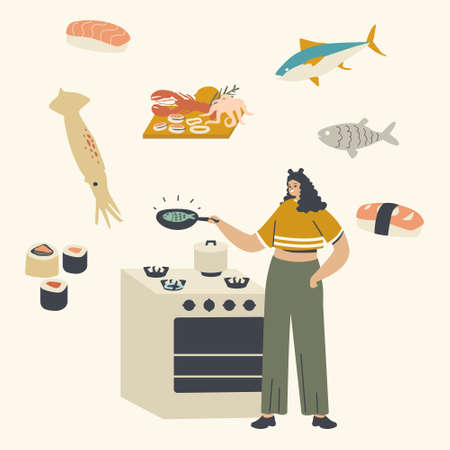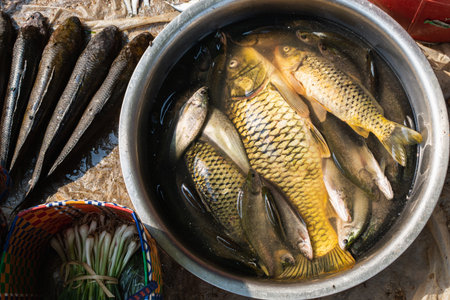Introduction to Malabar Fish Curry Culture
The Malabar Coast, stretching along the southwestern shoreline of India, is a region where the rhythm of the sea deeply influences local life. Here, fish curry is more than just a dish—it is an essential part of everyday existence and a symbol of the area’s rich culinary heritage. The tradition of preparing fish curry dates back centuries, shaped by trade, migration, and cultural exchanges between diverse communities such as Malayalis, Konkanis, and Mappilas. For many households along the coast from Kasaragod to Kozhikode, fish curry is not just food but a daily ritual that brings families together around the table. The abundance of fresh seafood from the Arabian Sea and the unique use of local spices like kokum, tamarind, and black pepper have given rise to distinct regional flavours and cooking techniques. Fish curry’s enduring presence in festivals, religious ceremonies, and coastal feasts reflects its deep connection with local identity and community bonding. In this way, traditional Malabar fish curry stands as a testament to the region’s history, cultural diversity, and the close relationship between its people and the ocean.
2. Key Ingredients and Spices: Regional Character
The Malabar Coast stretches along the southwestern shoreline of India, traversing the diverse states of Kerala, Karnataka (notably Mangalore), and Goa. Each region boasts a unique culinary identity, especially when it comes to traditional fish curry. The choice of local fish varieties, indigenous spices, and cooking mediums reflect centuries-old traditions rooted in geography and community.
Locally Sourced Fish Varieties
| Region | Popular Fish Varieties |
|---|---|
| Kerala | Pearl spot (Karimeen), Mackerel (Ayala), Sardine (Mathi), Seer fish (Neymeen) |
| Mangalore | King fish (Anjal), Pomfret, Mackerel (Bangude), Sardine |
| Goa | Pomfret, King fish (Surmai), Ladyfish (Kane), Mackerel (Bangda) |
Signature Spices & Cooking Mediums
Each region imparts its signature through spice blends and cooking oils:
| Region | Main Spices Used | Cooking Oil/Medium |
|---|---|---|
| Kerala | Kudampuli (Malabar tamarind), Mustard seeds, Curry leaves, Turmeric, Fenugreek, Black pepper, Fresh coconut paste or coconut milk | Coconut oil – delivers an unmistakable aroma and authentic taste |
| Mangalore | Bafat powder (custom blend of red chillies, coriander, cumin, peppercorns), Tamarind pulp, Garlic, Ginger, Curry leaves | Coconut oil or refined sunflower oil for lighter gravies |
| Goa | Kokum or Goan vinegar for tanginess, Red chillies (Kashmiri for colour), Cumin, Coriander seeds, Black peppercorns, Garlic, Cinnamon, Cloves | Coconut oil or groundnut oil – sometimes palm vinegar used in masalas |
Distinct Flavour Profiles: A Comparison
The interplay between souring agents—like kudampuli in Kerala and kokum in Goa—defines the tangy note of each curry. Kerala’s curries are often rich and creamy from coconut milk or paste; Mangalorean versions lean towards fiery-red gravies with a dry-roasted spice base; Goan curries are renowned for their deep red hues and aromatic masalas spiked with vinegar. These differences showcase not just taste but also deeply embedded cultural influences such as Portuguese legacy in Goa and Ayurveda-inspired choices in Kerala.

3. Preparation Methods: From Clay Pots to Modern Kitchens
When we talk about the soul of Malabar fish curry, the method of preparation is as significant as the ingredients themselves. Traditionally, in Kerala and along the Malabar coast, fish curry has always been synonymous with meen chatti – a rustic clay pot that brings out unique earthy flavours. The slow-cooking process in these pots allows the spices to mingle beautifully with coconut milk or tamarind-infused gravies, creating a taste that is truly authentic and nostalgic for many Malayali households.
The Charm of Meen Chatti Cooking
In small coastal towns from Kozhikode to Kasaragod, it’s common to see grandmothers gently simmering fresh catch in clay pots over wood-fired stoves. This method, passed down through generations, is believed to enhance the depth of flavour and aroma. As the curry bubbles away slowly, the porous nature of the clay absorbs excess moisture and imparts a mild earthiness. For many, this is the real ‘secret’ behind legendary Kerala fish curries like Malabar Meen Curry or Thalassery Fish Curry.
Urban Adaptations: From Tradition to Convenience
However, with changing times and urbanisation, not everyone has access to meen chatti or time for slow cooking. In cities like Kochi, Bengaluru or even Mumbai, people have adapted traditional recipes for modern kitchens. Non-stick pans and pressure cookers have replaced clay pots, and induction stoves have taken over firewood chulhas. While these methods offer convenience, many home cooks still try to preserve authenticity by using ready-to-use masala mixes from Kerala or adding a small piece of clay pot into the cooking vessel for that nostalgic hint of flavour.
Bridging the Old and New
Despite these changes, passion for traditional Malabar fish curry remains strong among both seasoned home chefs and young foodies. Weekend markets in Kerala are full of people searching for meen chatti and fresh local fish like seer or sardine (mathi). Even in cosmopolitan settings, there’s a growing trend towards reviving slow-cooking techniques using earthenware or cast iron kadais. This blend of age-old wisdom with modern practicality is what keeps the legacy of Malabar’s diverse fish curry culture alive on our plates today.
4. Signature Fish Curry Varieties by Region
The Malabar Coast is a treasure trove of regional fish curries, each reflecting the distinct flavours, ingredients, and cooking traditions of its local communities. From the coconut-rich gravies of Kerala to the spicy-sour delights of Goa, let’s dive into some of the most iconic fish curry recipes that define this coastline.
Kerala: Meen Curry
Kerala’s legendary “Meen Curry” is a staple in Malayali homes and toddy shops alike. Typically made with fresh catch like pearl spot or seer fish, this curry stands out for its use of roasted coconut, tangy tamarind (kudampuli), and a special blend of spices like fenugreek and mustard seeds. Traditionally, it is slow-cooked in a clay pot (“chatti”) which imparts an earthy aroma to the dish.
Key Features:
| Ingredient | Preparation Style |
|---|---|
| Kudampuli (Malabar tamarind) | Soured broth for depth |
| Coconut oil & curry leaves | Tempered for authentic aroma |
| Spice mix (chilli, turmeric, coriander) | Roasted & ground fresh |
Mangalore: Mangalorean Fish Curry
This coastal Karnataka classic is all about fiery red chillies and freshly grated coconut. The “Mangalorean Fish Curry” often uses kingfish or mackerel, simmered in a thick masala paste made from dry red chillies, coriander seeds, garlic, and tamarind. What makes it unique is the slightly sweet undertone from coconut milk—making it a true crowd-pleaser at any “bhojana” (feast).
Main Highlights:
- Use of Byadgi chillies for colour and heat
- Coconut milk balances the spice
- Tamarind pulp gives signature tartness
Goa: Xitt Kodi
No Goan meal is complete without “Xitt Kodi”—rice with spicy fish curry. This vibrant dish features firm white fish cooked in a sauce bursting with Goan vinegar, kokum (local souring fruit), and plenty of red chillies. The Portuguese influence is evident in the use of vinegar and sometimes tomatoes, setting it apart from neighbouring styles.
Distinctive Elements:
- Kokum or Goan vinegar for tanginess
- Pungent spice paste ground on traditional stone grinders (“rogdo”)
- Often served with steamed rice (“xitt”) or poi bread
Regional Comparison Table:
| Region | Name | Main Sour Agent | Coconut Used? |
|---|---|---|---|
| Kerala | Meen Curry | Kudampuli (tamarind) | Yes – roasted/grated |
| Mangalore | Mangalorean Fish Curry | Tamarind pulp | Yes – fresh/milk |
| Goa | Xitt Kodi | Kokum/Vinegar | No/Minimal |
Whether you’re relishing the smoky notes of Kerala’s meen curry or diving into the bold tanginess of Goan xitt kodi, each variety tells a story rooted deeply in its region’s climate, culture, and daily life by the Arabian Sea.
5. Cultural Practices and Serving Traditions
When you talk about fish curry along the Malabar Coast, it is more than just a delicious dish—it’s a symbol of regional identity and a centrepiece of cherished dining customs. Each community, whether it’s the Hindu, Muslim, or Christian households, has their own cultural spin on how and when this iconic curry graces their tables.
Festivals and Special Occasions
Fish curry takes the spotlight during grand feasts like Onam Sadhya in Kerala, where it adds depth to the vegetarian spread as an extra treat for non-vegetarian families. In many Catholic weddings across Kochi and Kottayam, meen curry is considered essential in the sadhya, with its tangy red gravy complementing the celebrations joy. Eid and other Muslim festivities also see the preparation of flavourful fish curries, often paired with pathiri or ghee rice.
Daily Meals and Family Gatherings
On regular days, fish curry is a staple at lunch or dinner, especially in coastal households where fresh catch is part of daily life. The family gathers around banana leaf plates, savouring spicy meen curry with steaming Kerala matta rice (red rice) or fluffy tapioca (kappa). For many, this isn’t just food—it’s nostalgia served on a plate, reminding them of home-cooked meals by Ammachi (grandmother) or Amma (mother).
Serving Rituals and Accompaniments
The way fish curry is served also reflects local traditions. In many homes, curry is prepared hours in advance to let the flavours mature—this is especially true for the famed toddy shop style curries that taste better the next day! Fish curry is usually ladled generously over rice or laid beside boiled tapioca. In some regions like Kozhikode and Kannur, coconut oil drizzled on top is a must-have finishing touch.
The communal act of eating together—with hands rather than cutlery—is an unspoken tradition here, strengthening bonds over shared meals. Whether enjoyed during festive gatherings or simple weekday lunches, fish curry remains a timeless comfort—uniting people across generations along the Malabar Coast.
6. Modern Twists and Fusion Influences
The traditional fish curries of the Malabar Coast have journeyed far from their humble, regional beginnings. As Kerala and the Malabar region opened up to global influences—through migration, tourism, and the growing diaspora—the classic meen curry has been reimagined in numerous exciting ways. Today, you can find Malabar fish curry with a dash of coconut milk foam or even plated as an elegant amuse-bouche in high-end restaurants across Mumbai, Dubai, and London. The influence of migration is especially evident among Malayali communities abroad, where local ingredients like tilapia or salmon are substituted for native Indian mackerel (ayala) or pearl spot (karimeen), but the soul of the dish—tangy tamarind, fiery red chillies, and aromatic coconut—remains untouched.
Fusion with Global Cuisines
Thanks to Kerala’s legacy as a spice port and its contemporary connections, chefs are experimenting with international elements. Imagine a sushi roll stuffed with spicy meen varattiyathu, or an Italian risotto finished with a drizzle of Malabar curry sauce. In cities like Kochi and Bangalore, you’ll see fusion bistros blending French techniques—like sous-vide fish—with authentic Malabari masalas. Even everyday home cooks now incorporate olive oil for health or serve the curry alongside quinoa instead of boiled rice.
Tourism’s Impact on Local Flavours
The steady influx of tourists along the Malabar Coast has also shaped how fish curries are prepared and presented. Resorts along Kovalam or Bekal beaches often tone down the spice levels for foreign palates while retaining signature flavours like roasted fenugreek and fresh curry leaves. Some coastal eateries offer “customisable” curries where guests select both their preferred fish and spice intensity—a concept that would surprise any old-school Amma!
A Living Culinary Tradition
While some purists argue that these adaptations dilute tradition, many locals view them as proof that Malabar’s culinary heritage is alive and evolving. After all, food culture here has always thrived on new ideas—whether from Arab traders centuries ago or today’s Instagram foodies. In essence, every modern twist tells another chapter in the ongoing story of Malabar’s beloved fish curry—a dish constantly refreshed by migration, innovation, and open-hearted hospitality.

